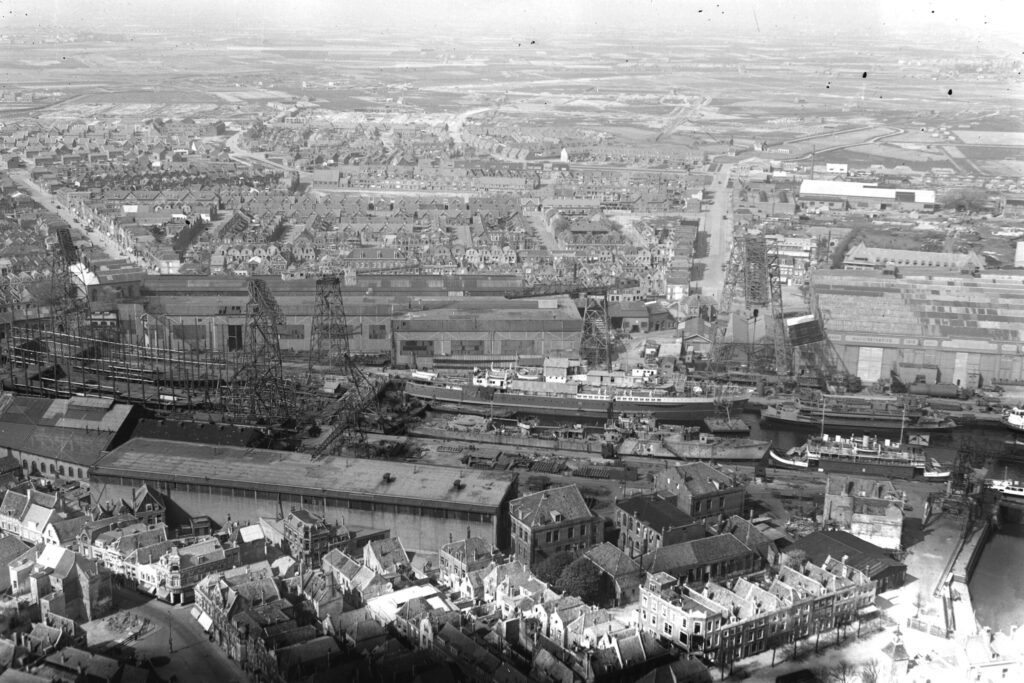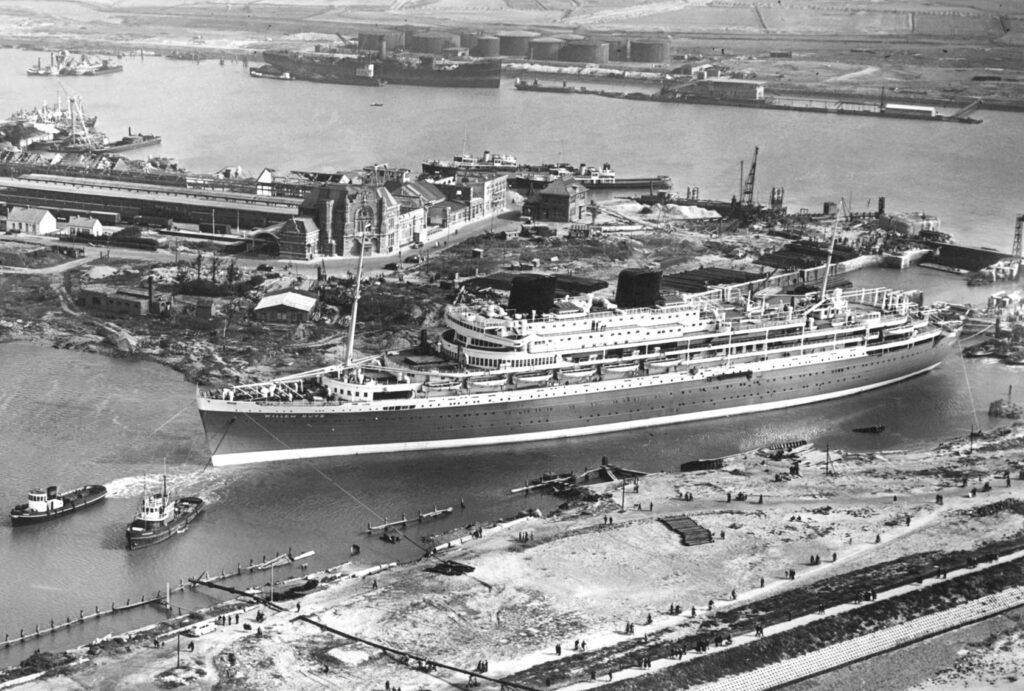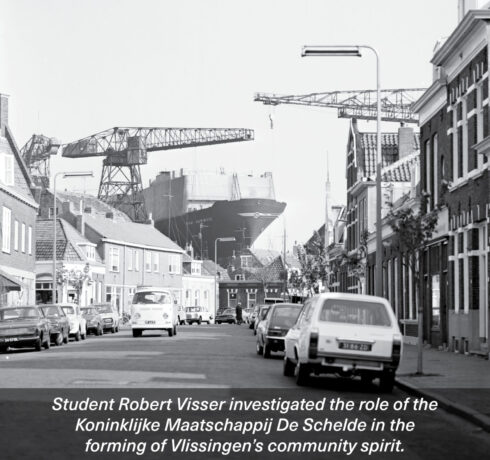When Erasmus University history student Robert Visser was selecting a subject to discuss in his first-year paper, it didn’t take him too long to decide on using the Royal Schelde Shipyard – and its subsequent role in forming the city of Vlissingen’s community spirit – as a focal point. “Due to my connections with Damen and my interest in the maritime industry, I thought this would be a very interesting subject to write about,” Robert says. Robert knows Damen well; he is the son of Damen Marine Components Managing Director Mark Visser, and he worked in the High-Speed Craft department in Gorinchem for a year before starting his university degree.
 Robert Visser.
Robert Visser.
Robert chose to investigate the social impact that De Schelde has had on Vlissingen and to compare this with other cities closely connected with the shipbuilding industry (such as the Heijplaat in Rotterdam and the Gusto yard in Schiedam). “The sense of community that is created in big industrial cities is significant. Besides the fact that De Schelde is a fantastic ship builder, it has also had a major social impact. Its employees lived and worked in Vlissingen, they had social lives in these communities, families worked there for generations. There is a sense of family.”
With its origins dating back to 1875, the yard’s shipbuilding history is well recorded; you only have to stand under the main stairs of the original De Schelde building (known today, of course, as Damen Naval) to see just how many vessels have been built at the yard. Researching social history, on the other hand, can be more difficult. “This is challenging because this is not fixed history. This is history based on personal experiences,” notes Robert.
For his research, he used numerous sources, including the Scheldewerf Museum and the MuZEEum (the maritime history museum in Vlissingen), as well as various existing historical texts. “There is a very nice publication by Eric Jan Weterings in which he describes the experiences of employees at the shipyard – from sheet workers, project managers, to directors. Their stories come to the same conclusion, that there was a huge amount of pride about working for De Schelde.” Robert picks out one particular section from Weterings’ book (called Herinneringen aan De Schelde, meaning Memories of De Schelde) to illustrate this point. “This is a quote from an employee called Piet Martijn who started working at De Schelde when he was eighteen years old. He described working at the yard as ‘You knew that you were in a good place, a kind of life insurance policy’. This kind of personal history was actually a highlight for me,” says Robert.
 The Schelde had a self-contained residential community where most of the workers lived . This created a true shipbuilding community in Vlissingen.
The Schelde had a self-contained residential community where most of the workers lived . This created a true shipbuilding community in Vlissingen.
To conclude this article, we will borrow Robert’s own conclusion from his paper: “In summary, De Schelde was founded in 1875 and gradually grew into one of the Netherlands’ leading shipbuilders over the years. After merging and then separating from RSV, De Schelde continued to exist independently until it was taken over by Damen Shipyards in 2000. De Schelde also had a self-contained residential community. Most workers lived in ‘Schelde houses’ that were often located together in streets or neighbourhoods. This created a true shipbuilding community in Vlissingen. Family connections cannot be forgotten either. Employees of De Schelde often had relatives working for the company and, as a result, it was natural for them to work there themselves. Social life therefore also took place within this shipbuilding community. De Schelde had staff organisations to which almost every employee belonged and followed activities. The Gusto yard in Schiedam has a similar profile. The Gorzen district in Schiedam was also a self-contained community that had its own facilities. Central to this community was the Heilig Hartkerk, and the Gorzen personnel were also proud of their business. Last to be discussed was Tuindorp Heijplaat, the shipbuilding community of RDM in Rotterdam. This shipbuilding community was a separate village where RDM employees lived. Social life also took place through club activities that were subsidised by RDM.
 Robert compared the social impact of De Schelde on Vlissingen with other cities closely associated with the shipbuilding industry.
Robert compared the social impact of De Schelde on Vlissingen with other cities closely associated with the shipbuilding industry.
“To arrive at an answer to the main question, ‘In what way did the Royal Schelde Shipyard contribute to the creation of a shipbuilding community in Vlissingen and how does it compare to other shipbuilding communities in the Netherlands?’. It has been explained in this paper that De Schelde had a major influence on the emergence of the shipbuilding community in Vlissingen. De Schelde contributed to this through the ‘Schelde houses’, the family ties within the company and that the social life of the workers took place within the ‘Schelde community’. Vlissingen’s shipbuilding community has many similar aspects to the shipbuilding community of the Gusto yard in Schiedam and Tuindorp Heijplaat. There are many similarities in terms of housing, family relationships and social life within the communities.”
Click here to read Robert’s complete paper (in Dutch).

